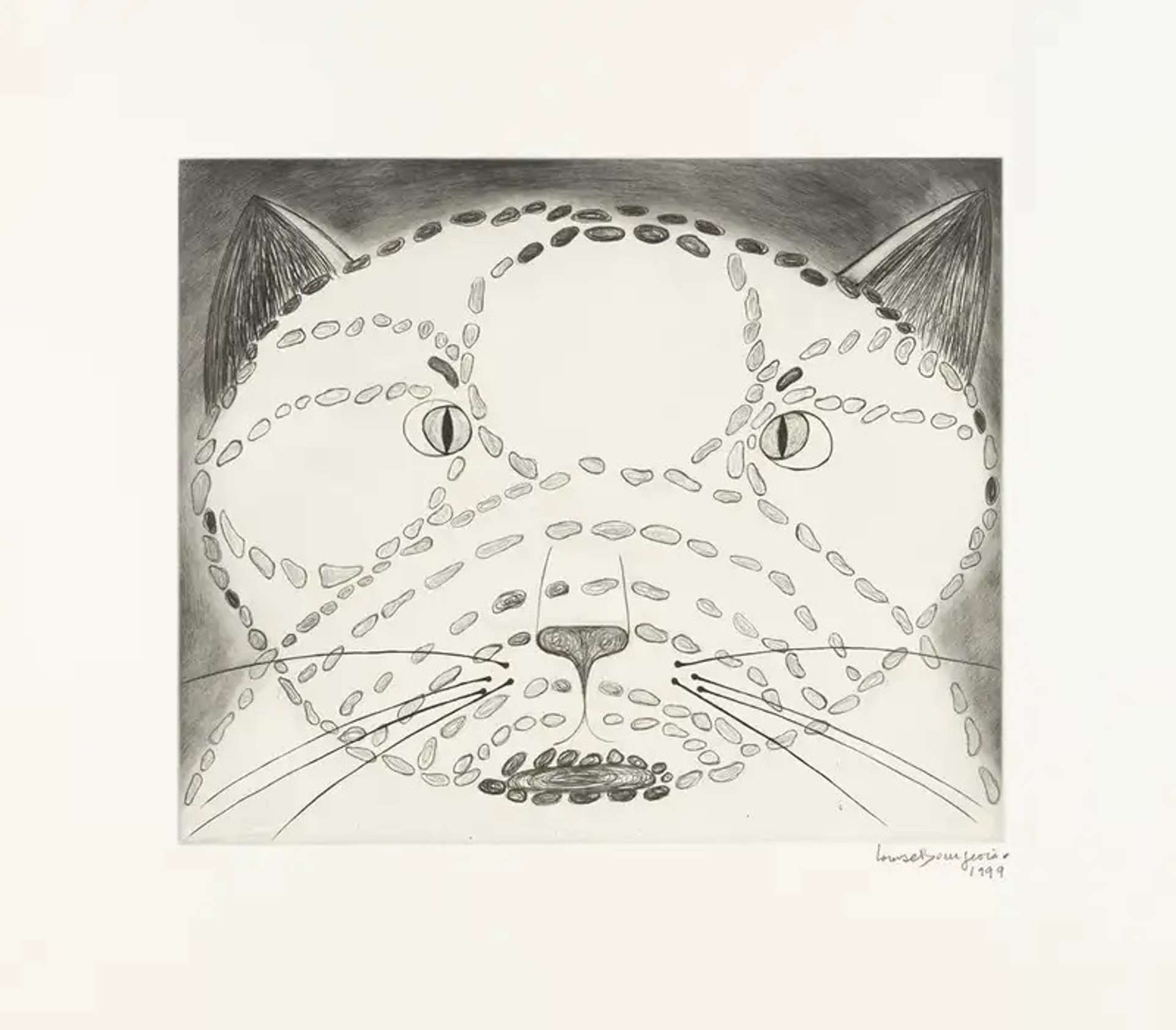 Spider & Snake © Louise Bourgeois 2003
Spider & Snake © Louise Bourgeois 2003
Louise Bourgeois
104 works
Master of materials Louise Bourgeois is an incomparable talent. Her life’s works have left an impact on not only the contemporary market, but a collection of her peers and collectors. Here’s 10 facts you might not have known about Louise Bourgeois.
She created deeply personal art that challenged conservative American norms
Louise Bourgeois started making groundbreaking and deeply personal art during a time when most people were focused on abstract and conceptual styles. Instead of following the Abstract expressionism of 1970's New York, she explored themes like sexuality, fear, childhood, and memory - pushing back against the conservative atmosphere of McCarthy-era America..
 Image © Sam valadi, CC BY 2.0, via Wikimedia Commons / Maman © Louise Bourgeois 1996
Image © Sam valadi, CC BY 2.0, via Wikimedia Commons / Maman © Louise Bourgeois 1996She’s a pioneer in the market
Bourgeois’ most expensive work ever sold at auction was her 1996 Spider sculpture, which sold for $32 million in 2019 at Christie's. That same year, she was recognized as the only female artist to earn one of the top 10 highest grossing lots. 20% of sales by women artists that year came from her.
 The Olive Branch © Louise Bourgeois 2004
The Olive Branch © Louise Bourgeois 2004Her father had an affair with her nanny
Bourgeois’ works reflect her own rationalisations and relationships within her complex family dynamic. These affairs were to be later depicted in some of her most notable works throughout her career.
She mentored Tracey Emin
Tracey Emin has noted and credited Louise Bourgeois many times as not only as a professional influence, but as someone who has supported her personally, outside of the market.
 The Guilty Girl is Fragile © Louise Bourgeois 2000
The Guilty Girl is Fragile © Louise Bourgeois 2000Louise Bourgeois fostered the Feminist Art movement (but didn’t identify as one)
Bourgeois' work frequently explored themes of femininity, gender, and power. However, despite her recognition as a pioneer in the movement and works like Arch Of Hysteria and Femme Maison, she has stated “I am a woman, so I don’t need to be a feminist.
 Femme Maison © Louise Bourgeois 1993
Femme Maison © Louise Bourgeois 1993She explores dark, psychological themes in her work
Bourgeois' work often explored themes related to her own psychological experiences, including feelings of anxiety, vulnerability, and trauma. She used her art as a way to work through these emotions and to process her own personal history, as seen in The Destruction Of The Father.
 Be Calm © Louise Bourgeois 2005
Be Calm © Louise Bourgeois 2005Her parents had a creative background
Bourgeois' parents owned a tapestry gallery and restoration business, which exposed her to textiles and craftsmanship from a young age. Its lasting impression on Louise influenced her future work with soft sculptures.
 Image © Alhill42, CC BY-SA 4.0, via Wikimedia Commons / Eyes © Louise Bourgeois 1997
Image © Alhill42, CC BY-SA 4.0, via Wikimedia Commons / Eyes © Louise Bourgeois 1997Nobody sees her the way she does
Torso, Self-Portrait is a prime example of Louise’s impression or rather, realisation of herself. Her self-image is intellectual and introspective, opposite of what would traditionally be an iteration of the male gaze.
 Image © Oliver Mark, CC BY-SA 4.0
Image © Oliver Mark, CC BY-SA 4.0She went on sabbatical
After spending time receiving therapy after her father’s death, Louise Bourgeois spent a considerable amount of time away from her work. It wouldn’t be until the early 1960s that she returned to her craft.
 Blue Bed © Louise Bourgeois 1998
Blue Bed © Louise Bourgeois 1998She’s earned global recognition for her work
Louise has won recognition for her work all across the world. She received an honorary doctorate from Yale in 1977, the National Medal of Arts by the United States in 1997, and in 2008 she was awarded the Legion of Honour, the highest award among the French.






